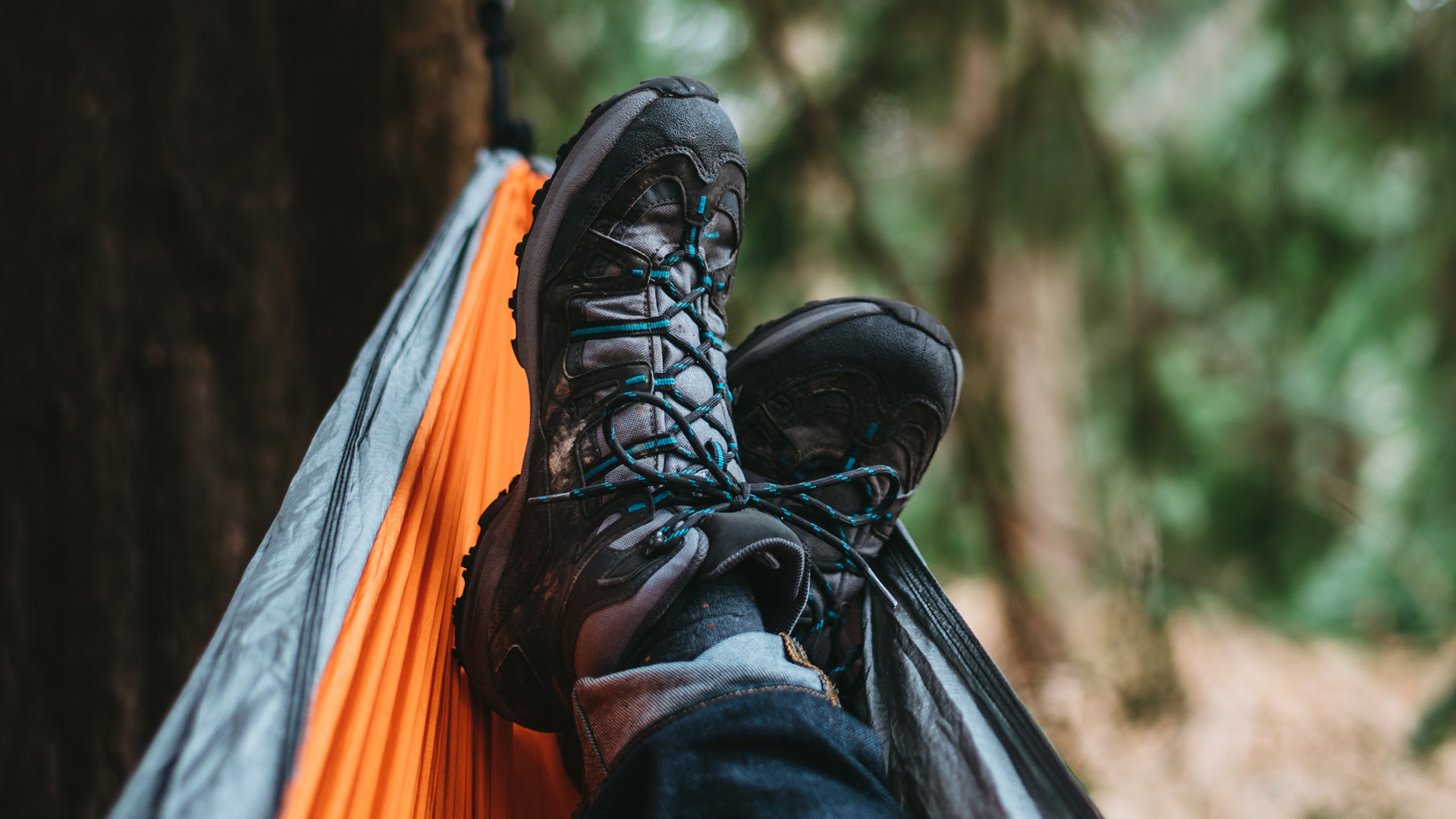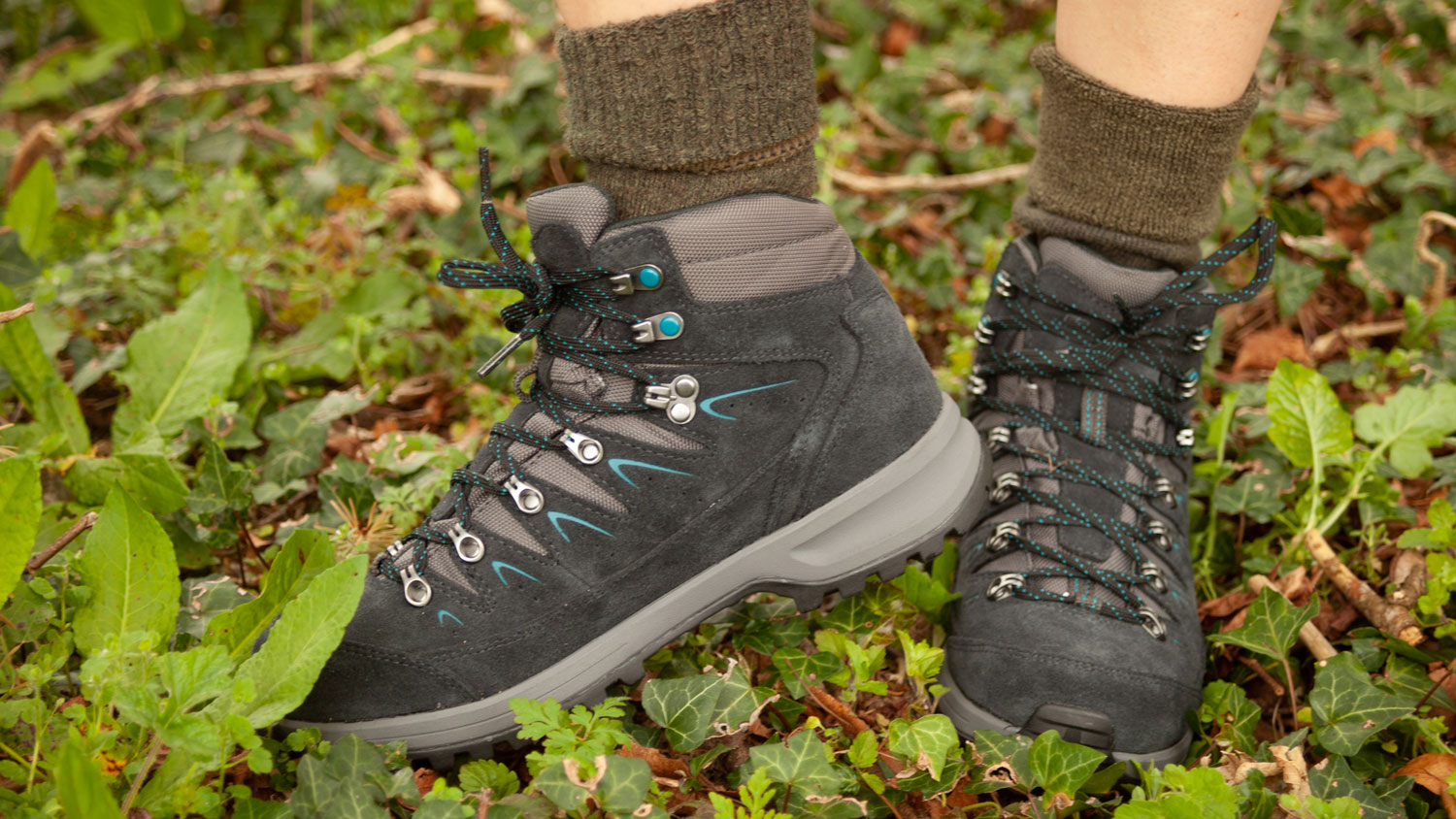

Assuming you already have some vaguely walking-appropriate footwear in your cupboard, shelling out for a bulky and probably fairly expensive pair of hiking boots can feel unnecessary. Do hiking boots really make a difference? The answer, in many cases, is yes. For example, if you're tackling rugged or unstable terrain, or walking long hours while wearing a heavy backpack, you really should be wearing a hiking boot.
However, there are some situations where you'll be able to get away with a less specialist footwear option. And some cases where you'll actually be better off with a different kind of shoe (we'll get into that below). Let's take a look at the situations where a hiking boot makes a difference, when you get away with not wearing a hiking boot, and the alternatives to consider.
What situations do I need hiking boots for?
Where today's best men's hiking boots (and women's hiking boots) really shine is when it comes to outright protection, support around the foot and ankle, stability and durability. If you're traversing rugged or treacherous terrain, carrying a heavy hiking backpack, or walking for long hours on a trail, a hiking boot really will make a difference.
One big benefit between a dedicated walking boot and a more general outdoorsy shoe is the ankle support. Most boots will have extra lace-holes designed to lock in your ankle securely and prevent you from twisting your foot on uneven terrain – a real danger when tiredness sets in and focus starts to wane. It also protects your ankle from bashing into rocks, of course.
Another big benefit is the extra stability offered by a hiking boot. If you're taking on any route that requires you to jam your foot into gaps between rocks or dig in your heel on a slippery or steep descent, a solid boot with a stiff sole is essential tool.
Consider also durability. Hiking boots are typically built to last, and withstand plenty of bashing around in situations where fashion-focused footwear won't be able to cope for long. You can also throw waterproofing into that mix (although many walking shoes now also offer this).

The Berghaus Explorer Trek – our top rated women's walking boots right now
Hopefully by now, the benefits of hiking boots are pretty clear. However, let's say you accidentally end up on a hike and you're wearing your everyday trainers. Is it the end of the world? Realistically, probably not. Assuming you avoid injury (bashing a toe, twisting an ankle, slipping over due to lack of grip... you know, the kind of things that boots are designed to protect against), it's probably not going to do any lasting damage. But if you're in any way keen on the types of walking we've outlined above, a hiking boot is a really solid investment.
Get all the latest news, reviews, deals and buying guides on gorgeous tech, home and active products from the T3 experts
When DON'T I need hiking boots?
There are some down-sides to hiking boots; mainly that they're often pretty bulky and heavy. That heaviness, coupled with the stiffer sole unit, can mean that your feet will start to fatigue more quickly if you're walking for long hours. If you're tackling established and stable paths, where fatigue will pose more of a challenge than the terrain itself, a pair of lighter weight shoes with more flexible soles might be a better bet.
In these cases, many people will sub in a pair of walking shoes. We have guides to the best men's walking shoes and the best women's walking shoes, any of which will be fine on less intense terrain. These also have the benefit of being more packable and more versatile than a pair of boots, which makes them a potentially better option than boots if you're heading off on a holiday that's only going to involve a bit of walking. Depending on the style you go for, they'll also probably stick out less if you wanted to wear them when walking around a city, too.
While walking shoes often have many of the same features as boots, they aren't exactly the same. Crucially, they can't provide the same kind of ankle support, and will start to struggle when the terrain gets really rough. Check out our hiking boots vs walking shoes article for an in-depth comparison.
What are some other types of footwear to consider?
If speed is your priority, you could also opt for a pair of trail runners. There's a lot of overlap between today's best trail running shoes and our top walking shoe picks.
If you're planning on doing a mix of climbing, scrambling and walking, you want a pair of approach shoes. In essence, these are much like a trail shoe, but with the same kind of soft, grippy rubber you'll find on dedicated climbing shoes. Most lack a heel, which can pose an issue on slippery descents, though.
In wintery conditions, you definitely don't want to be wearing shoes – a pair of full B2-rated winter mountain boots should be at the top of your list.
If it's really hot, you could consider a pair of walking sandals, or at a push, walking flip flops (although the latter is very much for the 'strolling around town or down the path to the beach' kind of walk). For hopping into and out of water, paddle boarding and the like, water shoes are a great option.
Ruth is a lifestyle journalist specialising in sleep and wellbeing. She has tested more mattresses than her small flat can handle and will talk at length about them to anyone who shows even a passing interest, and has had to implement a one-in-one-out pillow policy for fear of getting smothered in the night. As well as following all the industry trends and advancements in the mattress and bedding world, she regularly speaks to certified experts to delve into the science behind a great night's sleep, and offer you advice to help you get there. She's currently Sleep Editor on Tom's Guide and TechRadar, and prior to that ran the Outdoors and Wellness channels on T3 (now covered by Matt Kollat and Beth Girdler-Maslen respectively).
